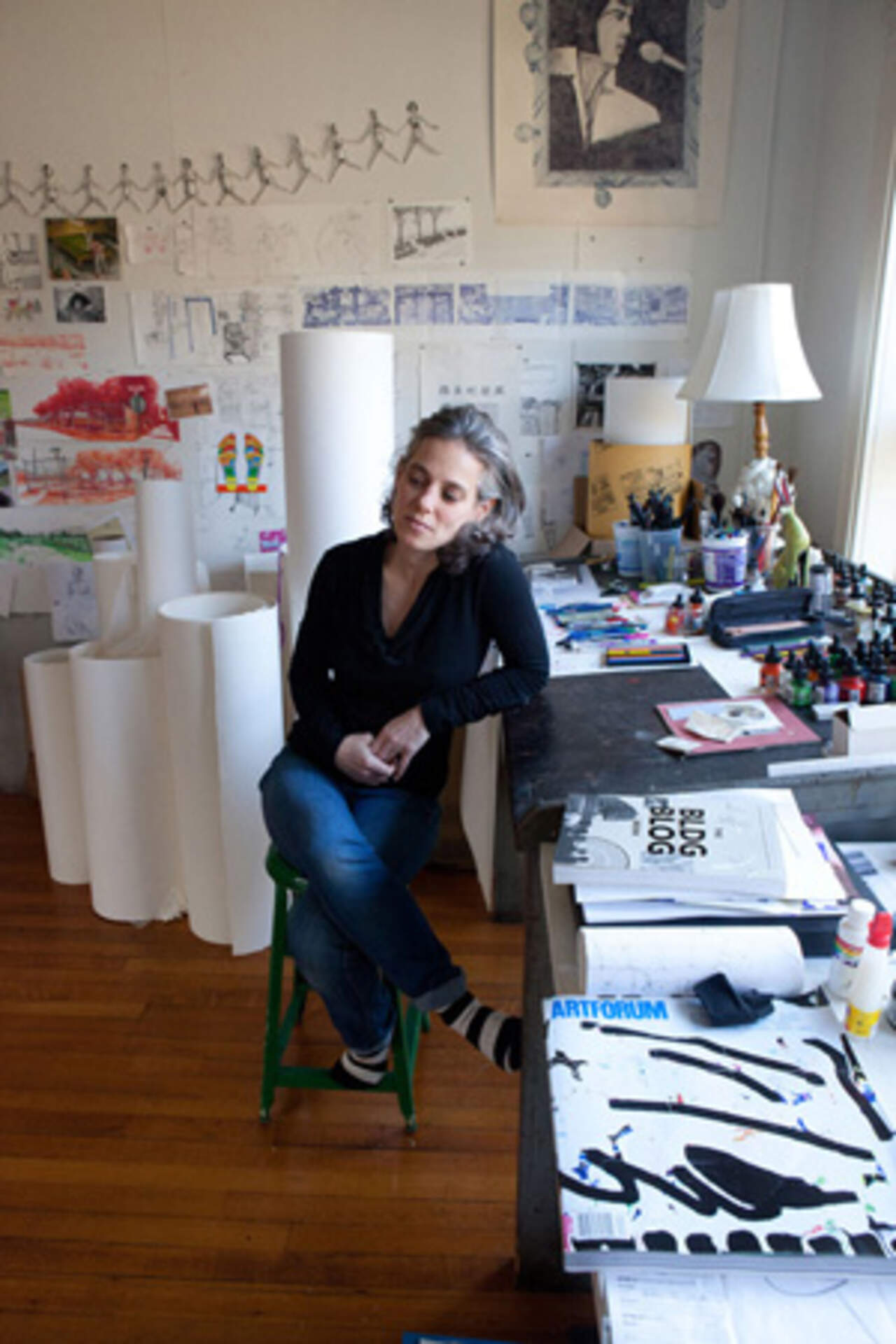Joan Linder
(b. 1970)
Joan Linder is part of the Living Legacy Project at the Burchfield Penney Art Center. Click here to listen to her artist interview.
Known for her labor-intensive drawings that transform mundane subjects into conceptually rich images, Joan Linder is an artist and an associate professor at the University of Buffalo, splitting her time between Buffalo and New York City, NY.
In describing her drawings, Joan explains, “My subjects include the banality of mass produced domestic artifacts; the politics of war; sexual identity and power; and the beauty disclosed in the close scrutiny of natural and man made structures. This diversity of subject matter is a critical element in my attempt to express the complexity and variety of contemporary life.” [1]
Joan has exhibited internationally in Brazil, Denmark, Germany, Israel, Japan, and Korea in addition to the United States.
A New York resident, Joan attended the Skowhegan School of Painting and Sculpture, and received an MFA from Columbia University and a BFA from the School of the Museum of Fine Arts, Boston.
Currently, Joan Linder is participating in PLACE, a group exhibition at Art Projects International in New York City, NY, with artists including Dino Dinco, Brandon Ballengee, Nicole Eisemann, Tracey Emin, David Huffman, and Gwenn Thomas.
Words from the artist:
In culture hyper-saturated by electronic imagery I use the traditional materials of a quill pen and a bottle of ink to create large-scale images that persist in exploring and claiming the sub-technological process of observation and mark making. In my recent work I am creating life-size representation of figures and objects. There is a vital relationship that arises between the observer and the observed on a scale of one to one. The sleight or sloppiness of hand creates an awkward and intimate surface which is compounded by the definite and energized process of crosshatching.
My subjects include the banality of mass-produced domestic artifacts; the politics of war; sexual identity and power; and the beauty disclosed in the close scrutiny of natural and manmade structures. This diversity of subject matter is a critical element in my attempt to express the complexity and variety of contemporary life.
